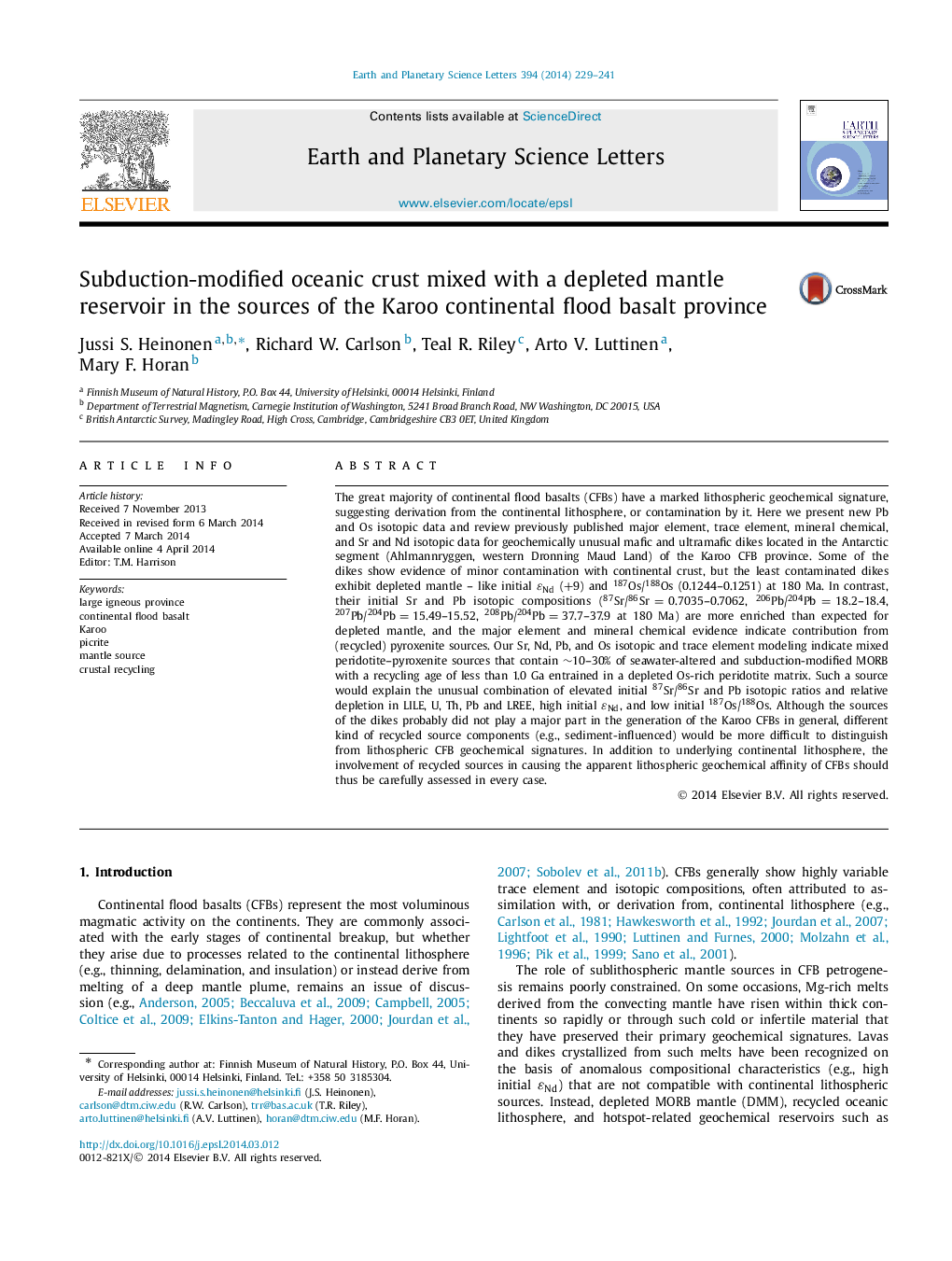| Article ID | Journal | Published Year | Pages | File Type |
|---|---|---|---|---|
| 6429418 | Earth and Planetary Science Letters | 2014 | 13 Pages |
â¢Dikes related to Karoo continental flood basalts derive from sublithospheric mantle source.â¢The mantle source was composed of mixture of recycled crust and peridotite.â¢The recycled component was subduction-modified MORB.â¢The peridotite component was DMM, oceanic lithosphere or non-chondritic primitive mantle.
The great majority of continental flood basalts (CFBs) have a marked lithospheric geochemical signature, suggesting derivation from the continental lithosphere, or contamination by it. Here we present new Pb and Os isotopic data and review previously published major element, trace element, mineral chemical, and Sr and Nd isotopic data for geochemically unusual mafic and ultramafic dikes located in the Antarctic segment (Ahlmannryggen, western Dronning Maud Land) of the Karoo CFB province. Some of the dikes show evidence of minor contamination with continental crust, but the least contaminated dikes exhibit depleted mantle - like initial εNd (+9) and 187Os/188Os (0.1244-0.1251) at 180 Ma. In contrast, their initial Sr and Pb isotopic compositions (87Sr/86Sr = 0.7035-0.7062, 206Pb/204Pb = 18.2-18.4, 207Pb/204Pb = 15.49-15.52, 208Pb/204Pb = 37.7-37.9 at 180 Ma) are more enriched than expected for depleted mantle, and the major element and mineral chemical evidence indicate contribution from (recycled) pyroxenite sources. Our Sr, Nd, Pb, and Os isotopic and trace element modeling indicate mixed peridotite-pyroxenite sources that contain â¼10-30% of seawater-altered and subduction-modified MORB with a recycling age of less than 1.0 Ga entrained in a depleted Os-rich peridotite matrix. Such a source would explain the unusual combination of elevated initial 87Sr/86Sr and Pb isotopic ratios and relative depletion in LILE, U, Th, Pb and LREE, high initial εNd, and low initial 187Os/188Os. Although the sources of the dikes probably did not play a major part in the generation of the Karoo CFBs in general, different kind of recycled source components (e.g., sediment-influenced) would be more difficult to distinguish from lithospheric CFB geochemical signatures. In addition to underlying continental lithosphere, the involvement of recycled sources in causing the apparent lithospheric geochemical affinity of CFBs should thus be carefully assessed in every case.
